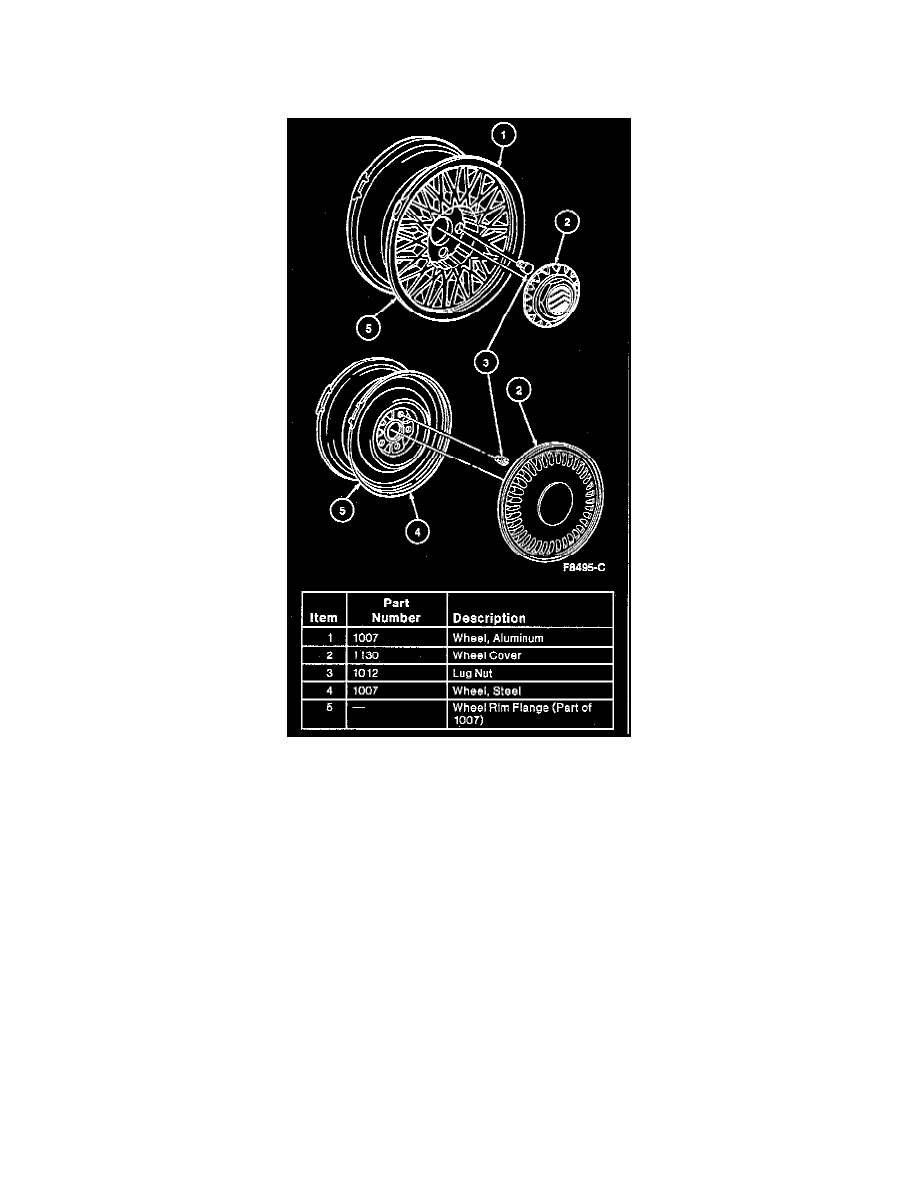Town Car V8-4.6L VIN W (1997)

WHEEL STILL ON THE GROUND COULD CAUSE THE VEHICLE TO MOVE.
NOTE: Extended use of other than conventional spare tires on a Traction-Lok rear axle could result in a permanent reduction in effectiveness. This loss
of effectiveness does not affect normal driving and should not be noticeable to the driver.
REMOVAL
1. Remove the wheel cover by inserting end of wheel lug wrench and prying against wheel rim flange. Loosen, but do not remove, the lug nuts.
CAUTION: Do not use heat to loosen a frozen wheel because heat can shorten the life of the wheel and damage the wheel bearings.
2. Raise the vehicle until the tire clears the floor.
WARNING: TURN AIR SUSPENSION SWITCH TO OFF (IF EQUIPPED) TO PREVENT PERSONAL INJURY.
CAUTION: To prevent damage, never use differential carrier as a lift point.
3. Remove the lug nuts. Remove the wheel from the wheel hub.
4. If corrosion has formed around the center pilot hole so the wheel cannot be removed by hand, use a wheel puller to remove the frozen wheel.
INSTALLATION
1. Clean all dirt and corrosion from the wheel hub mounting surface and center pilot hole of the wheel. Apply a thin coat of Disc Brake Caliper Slide
Grease D7AZ-19590-A or equivalent meeting Ford specification ESA-M1C172-A to the axle pilot flange to reduce corrosion.
2. Place the wheel on the hub. Install the locking wire hubcap pedestal (if used) and the lug nuts. Tighten them alternately to draw the wheel evenly
against the wheel hub.
3. Lower the vehicle. Tighten the lug nuts to 115-142 Nm (85-105 ft. lbs.).
4. Install wheel cover to wheel.
Both the base and bright wire wheel covers are full plastic wheel covers with integral plastic latches which retain to the undercut in the wheel at the
